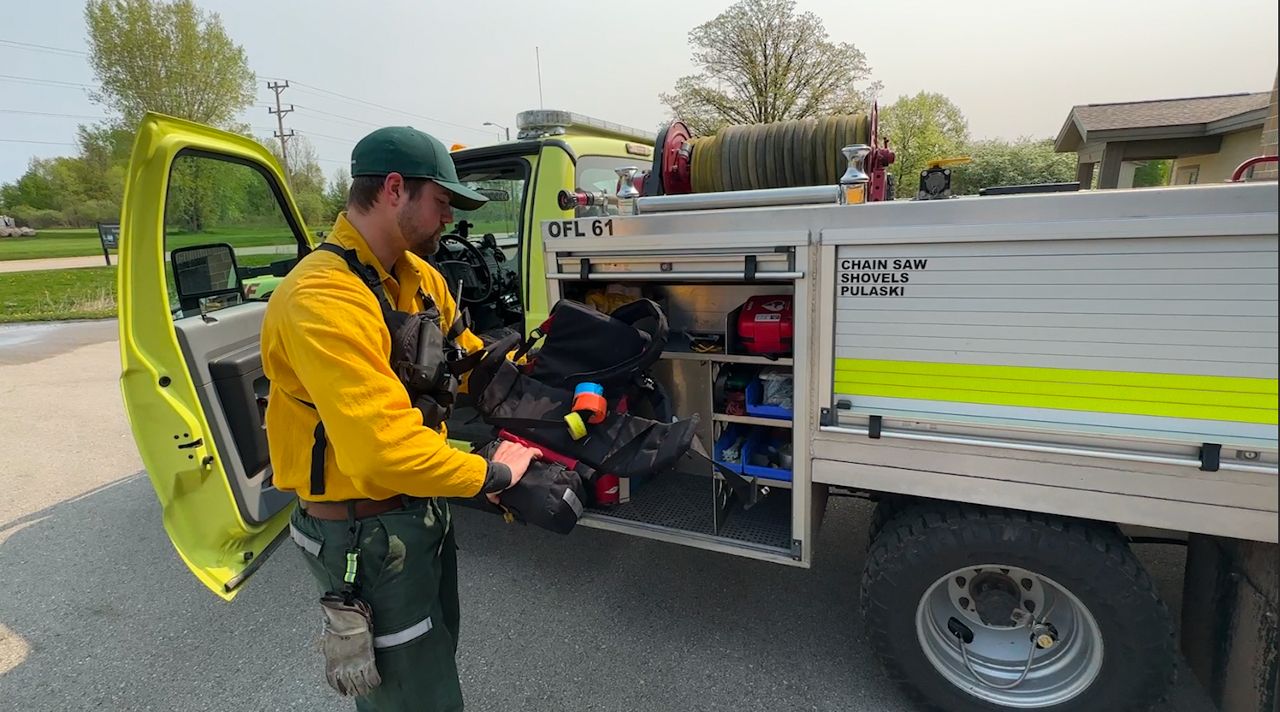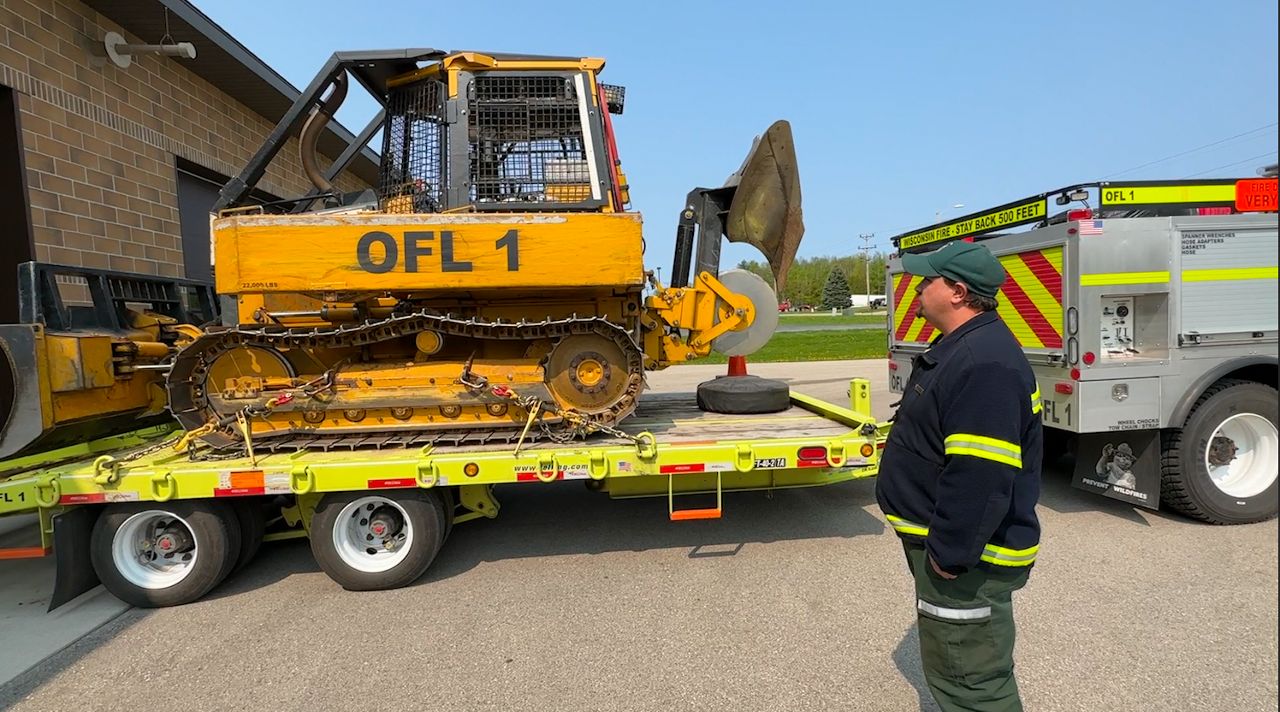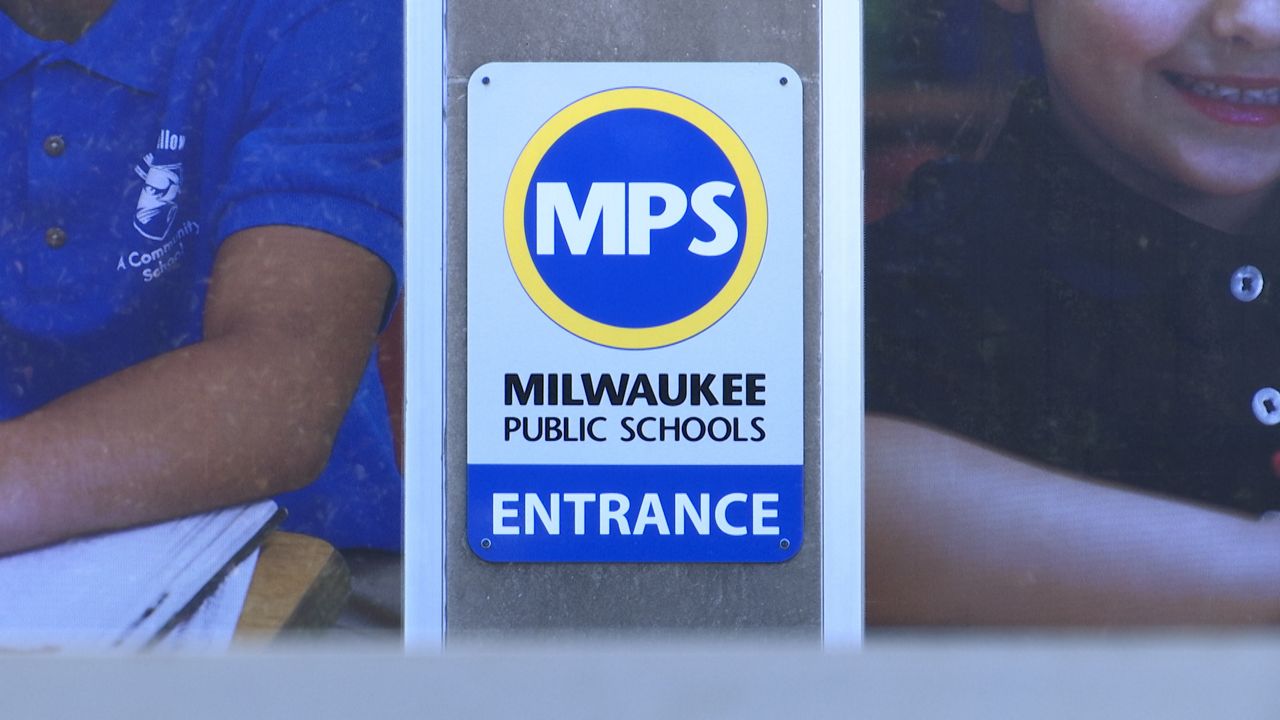OCONTO FALLS, Wis. — Each day Garrett Lubbers and other members of the staff at the Oconto Falls Ranger Station check the gear they use to fight wildfires.
That’s everything from trucks and shovels to tractor-plows and personal fire shelters. Spring is when most wildfires occur in Wisconsin.
“The past couple of weeks we’ve had maybe three or four fires,” Lubber said. “They’ve all been relatively small, which is good. We like to see that. We attribute that to our partners in the fire departments throughout the county that they’ve got fast response times and they can knock down the fire before it gets large and uncontrolled.”
Warmer temperatures, wind, low humidity and residential fires tied to spring clean up can create conditions ripe for fires.

“It definitely would be nice to get some rain. I think it’s been about two weeks since we’ve had any kind of decent rainfall in Oconto Falls and Oconto County,” Lubbers said. “For that fire danger to decrease and go down to ether moderate or low, we’d need to see some kind of rainfall which would bring humidities up and hopefully some windier conditions die down.”
Parts of northern Wisconsin — including Oconto County — have seen high and very high fire danger in the past week.
Oconto Falls Ranger Station team leader Richard Lietz said weather dictates the day at ranger stations.
“The minute that snow starts melting off we’re looking at weather, we’re looking at what the fuel conditions are going to be and we start staffing our staff based on the weather needs,” he said.
While a lot of vegetation is starting to green up, it doesn’t mean the fire danger has passed.
“Even though it’s significantly green outside this time of year, we still have areas where the sandy soils are where there’s a lot of brown material still on the ground,” Lietz said. “Even though there’s that mix of brown and green, they’re going to burn pretty radically.”

In the next few weeks, the fire threat will subside. But it doesn’t go away through the summer and much of the year. The DNR works in conjunction with local fire departments year-round.
“We do training as well, typically once a year prior to fire season or during fire season,” Lubber said. “It’s a refresher to tell them some of the safety tips, what we want to see on scene with the fire department, and just a refresher of, ‘start thinking about fires happening and what you would do on scene if you had to respond to them.’”










